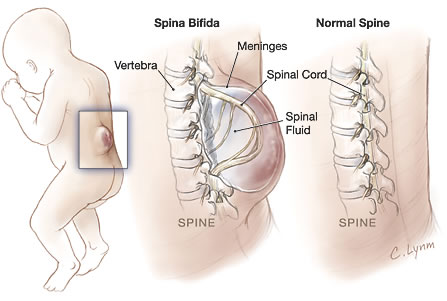Search This Blog
The blog aims to educate and knowledge sharing portal on pediatrics and the miscellaneous disease.
Featured
- Get link
- X
- Other Apps
Introduction to Spina bifida
Spina bifida is a birth defect that occurs when the spine and spinal cord don't form properly. It is a type of neural tube defect. The neural tube is the structure in a developing embryo that eventually becomes the baby's brain, spinal cord, and tissues that enclose them.
Normally, the neural tube forms early in pregnancy and it closes by the 28th day after conception. In babies with spina bifida, a portion of the neural tube does not close or develop properly, causing defects in the spinal cord in the bones of the spine.
Spine Bifida can range from mild to severe, depending on the type of defect, size, location, and complications. When necessary, early treatment for spina bifida involves surgery although such treatment does not always completely resolve the problem.
Types
Spina bifida occulta
Myelomeningocele
Symptoms
- Spina bifida occulta - Typically there are not any signs or symptoms because the spinal nerves are not involved. But you can sometimes see signs on the newborn's skin above the spinal defect, including an abdominal tuff of hair, or a small dimple or birthmark. Sometimes, the skin marks can be signs of an underlying spinal cord issue that can be discovered with an MRI or spinal ultrasound in a newborn.
- Myelomeningocele - In this severe type of spina bifida.
- The spinal canal remains open along several vertebrae in the lower or middle back.
- Both the membranes and the spinal cord or nerves protrude at birth, forming a sac.
- Tissues and nerves usually are exposed, through sometimes skin cover the sac.
Popular Posts
Diagnosis and treatment of Umbilical Hernia
- Get link
- X
- Other Apps
Overview and symptoms of Turner syndrome
- Get link
- X
- Other Apps




Comments
Post a Comment